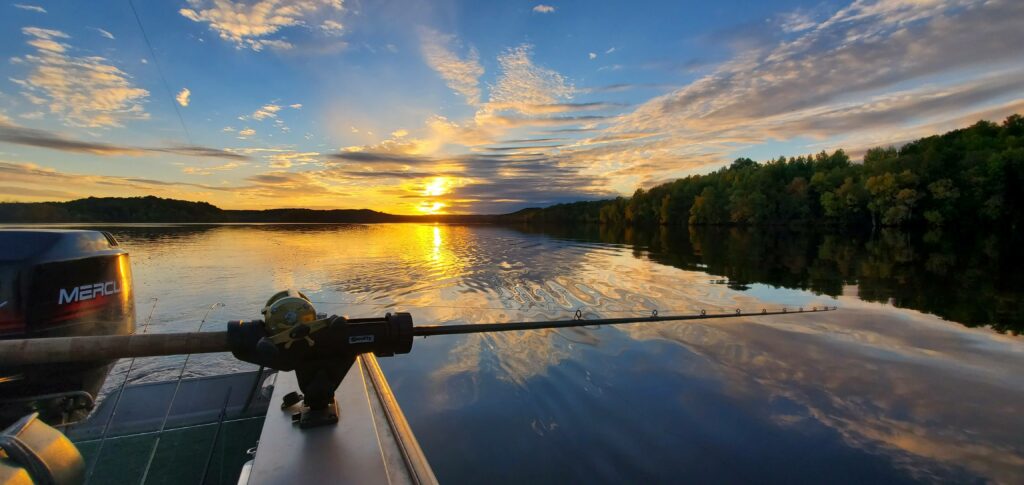Menasha Lock Re-Opening Plans Put On Hold Indefinitely
Cost for Electric Fish Barrier Significant, Board Votes to Stop Project
Original Story: Fox River Navigation System Authority
The Fox River Navigational System Authority (FRNSA) board voted in late June to halt work on the Menasha lock re-opening project, with no set date for resuming development of an electric barrier in the lock channel.
The Menasha lock (located between Lake Winnebago and Little Lake Butte des Morts) had been the most-used lock in the system between Lake Winnebago and Green Bay. After the discovery of a round goby below the Neenah dam in 2015, FRNSA voluntarily closed the lock in an effort to keep the invasive fish out of Lake  Winnebago. Since then, the round goby has become abundant in the Fox River and Little Lake Butte des Morts.
Winnebago. Since then, the round goby has become abundant in the Fox River and Little Lake Butte des Morts.
The FRNSA has spent more than $750,000 on a proposed electronic barrier which would have allowed boats to pass through the lock, but emit a DC current to repulse fish from entering the lock channel.
However, with an installation cost of $7 million, plus an annual operating cost of $300,000-$400,000, the FRNSA board voted to stop work on the project. Since 2015, FRNSA has been working with experts in aquatic ecosystem management to design a plan using a system of an electric deterrent barrier and water flow regulation at the Menasha lock. Board members indicated further work on the proposal was not within the organization’s budget.
Prior to closing the Menasha lock, it had been the busiest lock on the system; now the DePere lock is the busiest. The locks are the only way the Fox River is navigable—from Menasha to the Bay of Green Bay the river drops in elevation 168 feet. From the Menasha lock to the Rapide Croche lock the river has 17 miles of navigable water. On the northern end of the river from Rapide Croche to the Bay of Green Bay the river is navigable for 20 miles.

“Our goal has always been to restore navigation of the Fox River through the lock system, but we also want to ensure we are protecting the waterways,” Ramlet said. He added FRNSA has maintained a testing program for invasive species for years.
Photo Credit: FRNSA
Questions? Comments? Contact Chris Acy, the AIS Coordinator covering Brown, Outagamie, Fond du Lac, Calumet, and Winnebago Counties at (920) 460-3674 or chris@fwwa.org!
Follow the Fox Wolf Watershed Alliance’s Winnebago Waterways Program on our Winnebago Waterways Facebook page or @WinnWaterways on Twitter! You can also sign-up for email updates at WinnebagoWaterways.org.
Winnebago Waterways is a Fox-Wolf Watershed Alliance program. The Fox-Wolf Watershed Alliance is an independent nonprofit organization that identifies and advocates effective policies and actions that protect, restore, and sustain water resources in the Fox-Wolf River Basin.
Check out the Keepers of the Fox Program at https://fwwa.org/watershed-recovery/lower-fox-recovery/
Reporting invasive species is a first step in containing their spread. Maintaining and restoring our waters and landscapes can reduce the impacts even when we don’t have other management options to an invasive species.
The post Menasha Lock Re-Opening Plans Put On Hold Indefinitely appeared first on Fox-Wolf Watershed Alliance.
Fox-Wolf Watershed Alliance
https://fwwa.org/2024/07/02/menasha-lock-re-opening-plans-put-on-hold-indefinitely/?utm_source=rss&utm_medium=rss&utm_campaign=menasha-lock-re-opening-plans-put-on-hold-indefinitely


 been laid in the sediment of the lake. Following analysis of the samples collected, we are please to report that no evidence of spiny waterflea were found which includes not finding any eggs!
been laid in the sediment of the lake. Following analysis of the samples collected, we are please to report that no evidence of spiny waterflea were found which includes not finding any eggs!








